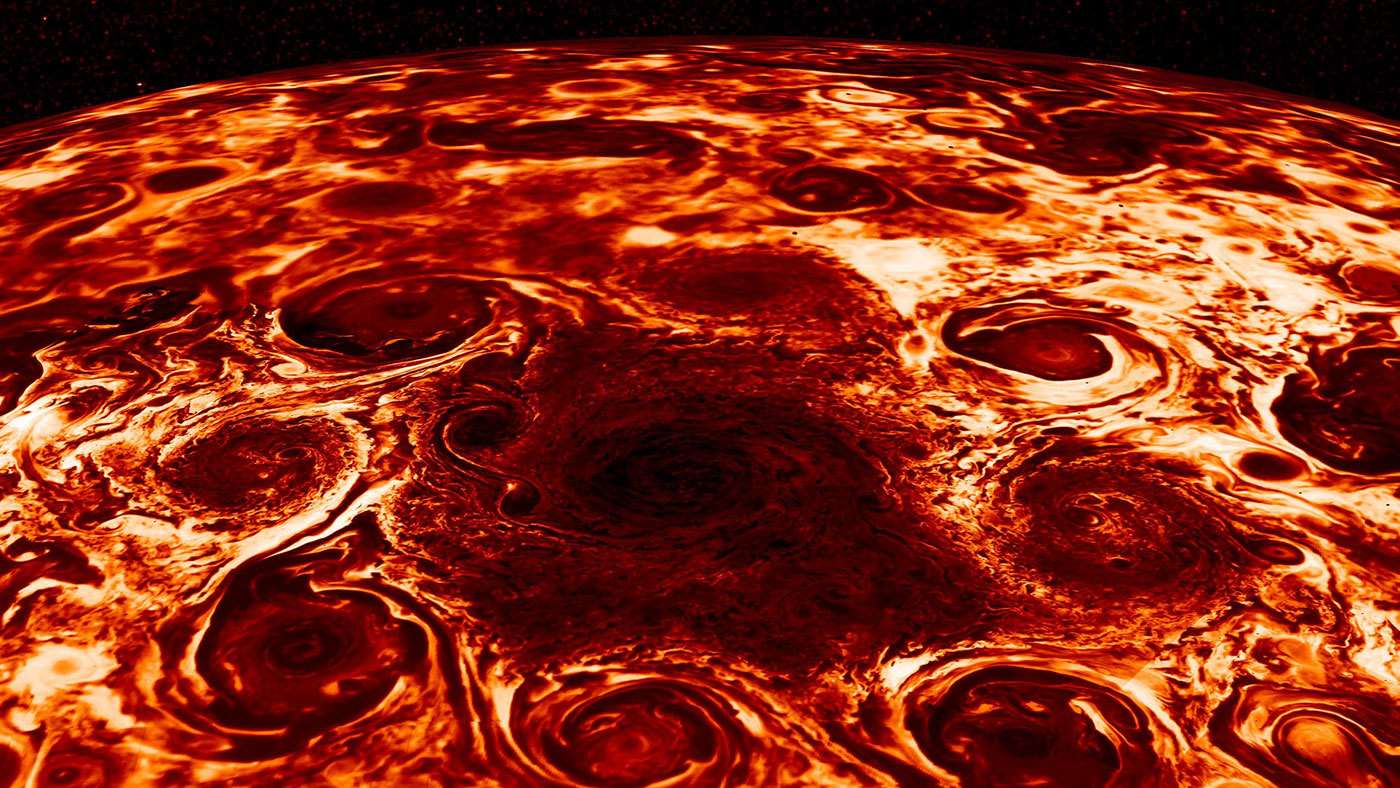
The characteristic colorful bands of Jupiter arranged in dark belts and light zones created by strong east-west winds in the planet’s upper atmosphere are traveling more than 400 mph (640 km/h). Thanks to the Juno space probe, we now know how deep these are.
These weather phenomena that swirls the atmosphere of the solar system’s largest planet were formed by forces that result from the rotation of the planet.
The depth to which the roots of Jupiter’s famous zones and belts extend has been a mystery for decades. Gravity measurements collected by Juno during its close flybys of the planet have now
provided an answer.
Now, the depth of these storms has been measured, and it was found that these phenomena are three thousand kilometers deep. About half the Earth’s radius.
NASA Space Space Juno traveled closer to Jupiter than any other previous spacecraft and even crashed into the planet. In doing so, it was able to measure what the planet looks like inside its cloud-covered atmosphere.
Below its windy and thick layer, the rest of the atmosphere seems to be arranged like a dense mass, rotating at the same speed as the actual planet inside.
“These astonishing science results are yet another example of Jupiter’s curve balls, and a testimony to the value of exploring the unknown from a new perspective with next-generation instruments. Juno’s unique orbit and evolutionary high-precision radio science and infrared technologies enabled these paradigm-shifting discoveries,”
– Scott Bolton, principal investigator of Juno from the Southwest Research Institute, San Antonio.
The finding is important for understanding the nature and possible mechanisms driving these strong jet streams. In addition, the gravity signature of the jets is entangled with the gravity signal of Jupiter’s core.
Reference:
Luciano Iess et al. “Measurement of Jupiter’s asymmetric gravity field”. Nature. March 7, 2018. DOI: 10.1038 / nature25776
Yohai Kaspi et al. “Jupiter’s atmospheric jet streams extend thousands of miles deep”. Nature. March 7, 2018. DOI: 10.1038 / nature25793
Tristan Guillot et al. “A suppression of differential rotation in Jupiter’s deep interior”. Nature. March 7, 2018. DOI: 10.1038 / nature25775
Alberto Adriani et al. “Clusters of cyclones encircling Jupiter’s pole”. Nature: March 7, 2018. DOI: 10.1038 / nature25491






















